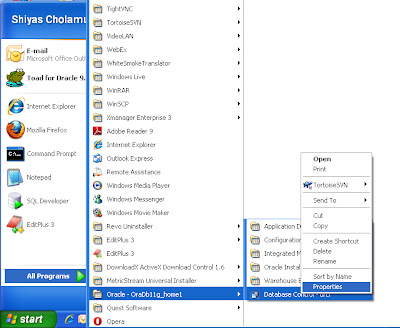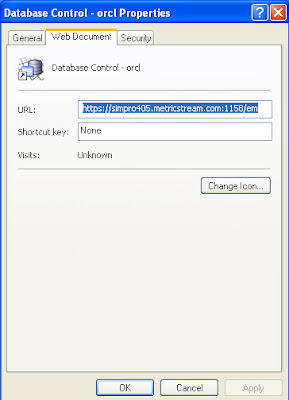The current value set to my environment variable PATH is
oracle@mymachine currentdirctory]$ echo $PATH
/home/oracle/Program/jdk1.6.0_21/bin:/home/oracle/app/oracle/product/11.1.0/client_1/bin:.:/home/oracle/Program/jdk1.6.0_21/bin:/home/oracle/app/oracle/product/11.1.0/client_1/bin:/usr/kerberos/bin:/usr/local/bin:/bin:/usr/bin:/home/oracle/bin
Add new enviroment variable and set the path
[oracle@mymachine currentdirctory]$ export ANT_HOME=/home/oracle/myproject/apache-ant-1.8.4
Add the above path to PATH variable
[oracle@mymachine currentdirctory]$ export PATH=${PATH}:${ANT_HOME}/bin
[oracle@mymachine currentdirctory]$ echo $PATH
/home/oracle/Program/jdk1.6.0_21/bin:/home/oracle/app/oracle/product/11.1.0/client_1/bin:.:/home/oracle/Program/jdk1.6.0_21/bin:/home/oracle/app/oracle/product/11.1.0/client_1/bin:/usr/kerberos/bin:/usr/local/bin:/bin:/usr/bin:/home/oracle/bin:/home/oracle/myproject/apache-ant-1.8.4/bin
You can see that the environmet path is appended.
oracle@mymachine currentdirctory]$ echo $PATH
/home/oracle/Program/jdk1.6.0_21/bin:/home/oracle/app/oracle/product/11.1.0/client_1/bin:.:/home/oracle/Program/jdk1.6.0_21/bin:/home/oracle/app/oracle/product/11.1.0/client_1/bin:/usr/kerberos/bin:/usr/local/bin:/bin:/usr/bin:/home/oracle/bin
Add new enviroment variable and set the path
[oracle@mymachine currentdirctory]$ export ANT_HOME=/home/oracle/myproject/apache-ant-1.8.4
Add the above path to PATH variable
[oracle@mymachine currentdirctory]$ export PATH=${PATH}:${ANT_HOME}/bin
[oracle@mymachine currentdirctory]$ echo $PATH
/home/oracle/Program/jdk1.6.0_21/bin:/home/oracle/app/oracle/product/11.1.0/client_1/bin:.:/home/oracle/Program/jdk1.6.0_21/bin:/home/oracle/app/oracle/product/11.1.0/client_1/bin:/usr/kerberos/bin:/usr/local/bin:/bin:/usr/bin:/home/oracle/bin:/home/oracle/myproject/apache-ant-1.8.4/bin
You can see that the environmet path is appended.





